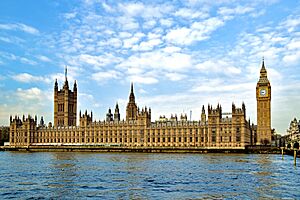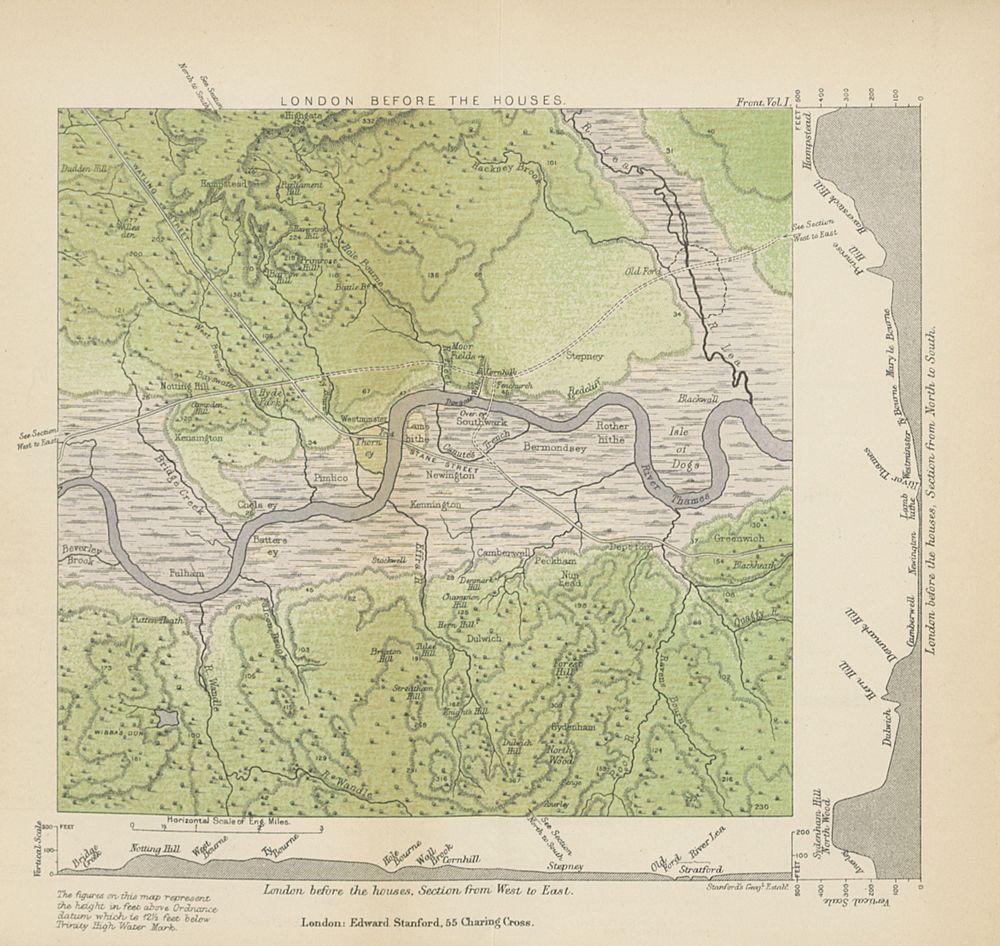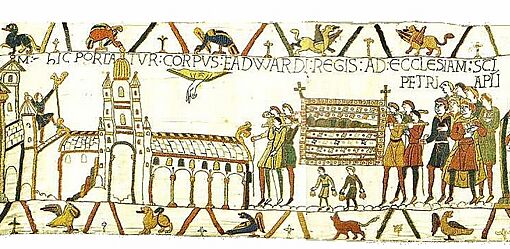Westminster facts for kids
Quick facts for kids Westminster |
|
|---|---|
 The Palace of Westminster |
|
 Western facade of Westminster Abbey |
|
| OS grid reference | TQ295795 |
| • Charing Cross | 0.58 mi (0.9 km) NEbE |
| London borough | |
| Ceremonial county | Greater London |
| Region | |
| Country | England |
| Sovereign state | United Kingdom |
| Post town | LONDON |
| Postcode district | SW1 |
| Dialling code | 020 |
| Police | Metropolitan |
| Fire | London |
| Ambulance | London |
| EU Parliament | London |
| UK Parliament |
|
| London Assembly | |
Westminster is a famous area in Central London, England. It's known for being a city and the main part of the London Borough of the City of Westminster. This area stretches from the River Thames up to Oxford Street.
Westminster is home to many important and well-known places. These include the Palace of Westminster, where the UK Parliament meets, and Buckingham Palace, the King's official home. You can also find Westminster Abbey, Westminster Cathedral, and Trafalgar Square here. A big part of London's entertainment area, the West End, is also in Westminster.
The name "Westminster" comes from an old English word, Westmynstre. It means "west monastery" or "west church". This was because of Westminster Abbey, which was west of the City of London. The Abbey started between the 7th and 10th centuries. It became very important when Edward the Confessor rebuilt it in the 11th century.
Westminster has been the center of England's government since about 1200. Since 1707, it has been the home of the Government of the United Kingdom. In 1539, Westminster officially became a city. People often use "Westminster" as a shorter way to talk about the Parliament of the United Kingdom. This is because Parliament meets in the Palace of Westminster.
Contents
Westminster's Location and Features
Where is Westminster?
The historical area of Westminster stretched from the River Thames to an old Roman road. This road is now called Oxford Street. It formed the northern border of Westminster.
An area called Thorney Island was once between two parts of the River Tyburn. This river flowed into the Thames. The River Westbourne formed the western border with Chelsea. Today, the path of this old river still marks the boundary of the modern borough.
Further north, Westminster included land on both sides of the Westbourne. This included areas like Knightsbridge. It also included parts of Hyde Park and most of Kensington Gardens.
Neighborhoods in Westminster
Westminster includes several well-known neighborhoods. These are Soho, St James, Mayfair, Covent Garden, Pimlico, Victoria, Belgravia, and Knightsbridge. Knightsbridge is also partly in Kensington.
In 1965, the old City of Westminster joined with Paddington and Marylebone. This created the larger modern borough we know today. These new areas are mostly north of Oxford Street.
Green Spaces in Westminster
Westminster has many beautiful parks and open areas. These include:
- Hyde Park
- Kensington Gardens (part of it)
- Green Park
- Buckingham Palace Garden
- St James's Park
How Westminster Started
The Abbey's Beginning
Westminster began to grow around Westminster Abbey. The Abbey was built on a place once called Thorney Island. This spot might have been chosen because of a natural crossing point over the River Thames. This crossing was part of an old Roman road called Watling Street. The whole area then became known as Westminster, named after the church.
A Legend of St Peter
There's a story that in the early 7th century, a fisherman named Edric helped a stranger cross the Thames to Thorney Island. This stranger was said to be St Peter himself. St Peter, who was also a fisherman, came to bless the new church. This church later became Westminster Abbey. He rewarded Edric with a huge catch of fish. St Peter told Edric to give a salmon to the king and the Bishop of London. This was proof that the church had already been blessed. Even today, on June 29th, the Worshipful Company of Fishmongers gives a salmon to the Abbey. They do this to remember the event.
Recorded History of the Abbey
An old document from 785 mentions land given to "the needy people of God in Thorney, in the dreadful spot which is called Westminster." This suggests a group of monks already lived there.
The Abbey's official history began in the 960s or early 970s. That's when Saint Dunstan and King Edgar brought Benedictine monks to the site.
Between 1042 and 1052, King Edward the Confessor started rebuilding St Peter's Abbey. He wanted it to be his royal burial church. It was the first church in England built in the Romanesque style. The building was finished around 1060. It was blessed on December 28, 1065, just a week before Edward died. He was buried there, and his wife Edith was buried next to him nine years later. William the Conqueror was crowned in the Abbey in 1066. This was the first coronation recorded there.
The Bayeux Tapestry shows the only picture we have of Edward's Abbey and the nearby Palace of Westminster. Some parts of the old monastery still exist today. The number of monks grew from about twelve to eighty over time.
Westminster's Journey Through Time
A Royal Home

Thorney Island, where Westminster Abbey stands, was the historic heart of Westminster. The Abbey became the traditional place where kings and queens of England were crowned. This tradition started with Harold Godwinson in 1066.
Around 1200, the Palace of Westminster, close to the Abbey, became the main home for the royal family. The royal treasury and financial records were moved here from Winchester. Later, the palace became home to the growing Parliament and England's law courts. So, London ended up with two important centers: the City of London for money and business, and Westminster for politics and culture.
Over time, the monarchs moved their main homes to other palaces. These included the Palace of Whitehall, then St James's Palace, and finally Buckingham Palace. The main law courts also moved to the Royal Courts of Justice in the late 1800s.
From Medieval Times to the Tudors
The area around the palace and abbey grew as a service area for them. The local church, St Margaret's Westminster, served the people living there. This included palace and abbey workers, farmers, and people in fancy homes. The area expanded and eventually connected to the City of London along the Strand.
In the early 1500s, Henry VIII changed the church system. He closed the Abbey and made it a cathedral. This meant the area became a "City." Even though it was much smaller than the City of London, it kept its city status.
Westminster was first known to have two Members of Parliament in 1545. This was much later than the City of London.
The growing city had important officials like a High Constable and a Town Clerk.
Westminster's Social Changes

A map from 1889 by Charles Booth showed how different people lived in Westminster. Rich and poor people lived on streets very close to each other. Some areas were very poor, like "Devil's Acre." But streets like Victoria Street had the wealthiest people. Westminster has improved a lot since then, with the very poor areas being cleared. However, there's still a big difference in wealth. You can see grand new buildings next to social housing built by the Peabody Trust.
What "Westminster" Can Mean
Because Westminster has been so important in British life, its name is often used in other ways.
- It can mean the Parliament of the United Kingdom itself.
- It can also refer to the whole political system of the UK.
- The "Westminster system" is a type of democratic government. It started in the UK and is used in many other countries, especially in the Commonwealth of Nations.
The term "Westminster Village" doesn't mean a real place. It's used to describe the close group of people involved in British politics. This includes Members of Parliament, journalists, and others connected to the government.
{{wide image|Westminster from the dome on Methodist Central Hall.jpg|750px|A wide view of Westminster from the roof of the Methodist Central Hall. Westminster Abbey is on the right.]]
Life in Westminster Today
Westminster has many people living there. In the 20th century, more and more wealthy people moved into apartments in the area. You can also find hotels, large Victorian homes, and army barracks near Buckingham Palace.
International Offices
Many Commonwealth countries have their High Commissions (like embassies) in Westminster. These include:
Learning in Westminster
Westminster is home to Westminster School, a well-known public school that grew from the Abbey. The University of Westminster is also here, with over 20,000 students.
Famous People from Westminster
Many notable people have connections to Westminster, including:
- Finn Azaz (born 2000), a footballer
- Andy Bray (born 1981), a cricketer
- Arthur Barnby (1881–1937), a cricketer and military officer
- Richard Colley (1833–1902), a cricketer and British Army officer
- Geoffrey Cooke (1897–1980), a cricketer and British Army officer
- John Fuller (1834–1893), a cricketer, clergyman, and theologian
- Ava Gardner (1922–1990), a famous American actress and singer
- Hady Ghandour (born 2000), a footballer
- Tatiana Hambro (born 1989), a fashion writer
- Tom Hiddleston (born 1981), a Golden Globe-winning actor
- Stephanie Leonidas (born 1982), an actress
- Alice Liddell (1852–1934), the inspiration for Alice in Wonderland
- Edward Low (1690–1724), a pirate from the Golden Age of Piracy
- Eddie Redmayne (born 1982), an Oscar-winning actor
- Quintin Twiss (1835–1900), a cricketer and stage actor
- Mary Woffington (1729–1811), a socialite
See also
 In Spanish: Westminster para niños
In Spanish: Westminster para niños





